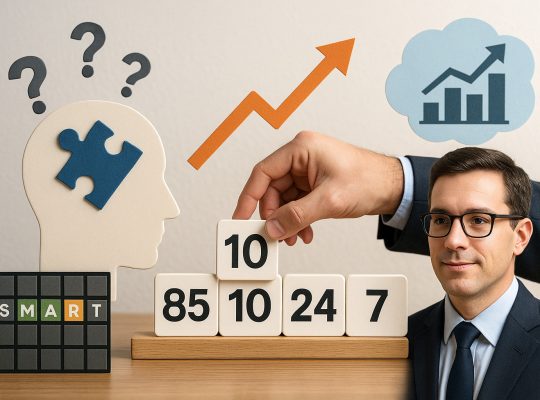Actuarial science has always relied on data to assess risk and predict outcomes. Over time, the methods used to develop these models have shifted from manual calculations to sophisticated algorithms. The transition from traditional approaches to machine learning has reshaped the industry, introducing new efficiencies, complexities, and challenges.
Traditional Actuarial Models: The Foundation of Risk Assessment
Traditional actuarial models were built on deterministic and statistical techniques, relying on well-defined formulas and historical data. These models followed structured assumptions and were designed to maintain stability in financial forecasting.
1. Mortality Tables and Life Tables
Actuaries have long used mortality tables to estimate life expectancy and set insurance premiums. These tables, based on historical mortality rates, provided a structured approach to assessing longevity risk.
2. Linear and Generalized Linear Models (GLMs)
GLMs became a standard tool in actuarial science, allowing professionals to estimate relationships between variables. These models were particularly effective in insurance pricing, claims prediction, and risk classification.
3. Markov Chains and Transition Models
Markov processes helped model transitions between different states, such as policyholder status changes, health conditions, and credit risk assessments.
4. Credibility Theory
Credibility models allowed actuaries to balance individual risk assessments with broader population data, ensuring that premium calculations accounted for both historical trends and individual policyholder characteristics.
5. Monte Carlo Simulations
Monte Carlo methods introduced randomness into actuarial modeling, making it possible to simulate thousands of potential scenarios to assess uncertainty and financial stability.
These traditional models formed the backbone of actuarial work for decades. However, as data sources expanded and computational power increased, traditional techniques faced limitations in handling complex interactions and vast datasets.
The Shift Toward Machine Learning in Actuarial Science
Machine learning has introduced new methodologies that go beyond predefined equations and structured assumptions. These models can identify patterns, adapt to new information, and optimize predictions.
1. Decision Trees and Random Forests
Decision trees categorize data based on a series of branching decisions. Random forests improve accuracy by combining multiple trees, making these models particularly effective in underwriting and fraud detection.
2. Gradient Boosting Machines (GBMs)
GBMs refine predictions by correcting errors from previous models in an iterative process. These models have been widely adopted for pricing, risk segmentation, and predictive analytics.
3. Neural Networks and Deep Learning
Neural networks mimic human brain structures, processing data through multiple layers. Deep learning has proven effective in image recognition, medical underwriting, and financial fraud detection.
4. Natural Language Processing (NLP) in Actuarial Work
NLP allows actuaries to analyze unstructured data, such as claim notes, legal documents, and social media sentiment, providing deeper insights into behavioral risk factors.
5. Reinforcement Learning for Dynamic Decision Making
Reinforcement learning models adjust strategies based on continuous feedback, making them suitable for optimizing dynamic pricing and risk management.
Comparing Traditional and Machine Learning Models
| Feature | Traditional Models | Machine Learning Models |
|---|---|---|
| Assumptions | Explicit, predefined | Adaptive, data-driven |
| Interpretability | High (clear relationships) | Lower (black-box models) |
| Data Requirements | Structured and clean | Large, diverse datasets |
| Computation | Efficient for small data | Requires significant processing power |
| Scalability | Limited to predefined parameters | Expands with additional data |
Traditional models remain relevant due to their interpretability and regulatory compliance. However, machine learning brings improvements in accuracy and efficiency, particularly for complex datasets.
Challenges in Implementing Machine Learning in Actuarial Science
1. Regulatory and Ethical Considerations
Regulations often require transparency in risk assessment. Black-box models present challenges in explaining decisions to regulators and policyholders.
2. Data Quality and Bias
Machine learning models rely on large datasets, but biased or incomplete data can lead to inaccurate predictions. Ensuring fairness and mitigating bias remains a priority.
3. Computational Complexity
Advanced models demand high processing power and expertise, requiring actuarial teams to collaborate with data scientists and engineers.
4. Interpretability vs. Accuracy
While machine learning models improve accuracy, actuaries must balance predictive power with the ability to explain outcomes in financial and legal contexts.
The Future of Actuarial Modeling
The integration of traditional actuarial techniques with machine learning continues to evolve. Hybrid approaches that combine statistical rigor with adaptive learning may offer the best of both worlds. Actuarial professionals are now focusing on:
- Explainable AI (XAI): Developing machine learning models that maintain transparency and accountability.
- Automated Underwriting: Using AI to process applications while maintaining regulatory compliance.
- Personalized Risk Pricing: Adapting insurance premiums based on real-time behavioral data.
- Real-Time Risk Monitoring: Leveraging IoT and big data to assess risk dynamically.
Actuarial science is shifting toward a data-driven future where machine learning enhances decision-making without replacing foundational statistical principles. The key lies in balancing innovation with reliability, ensuring that emerging techniques complement traditional actuarial expertise.




